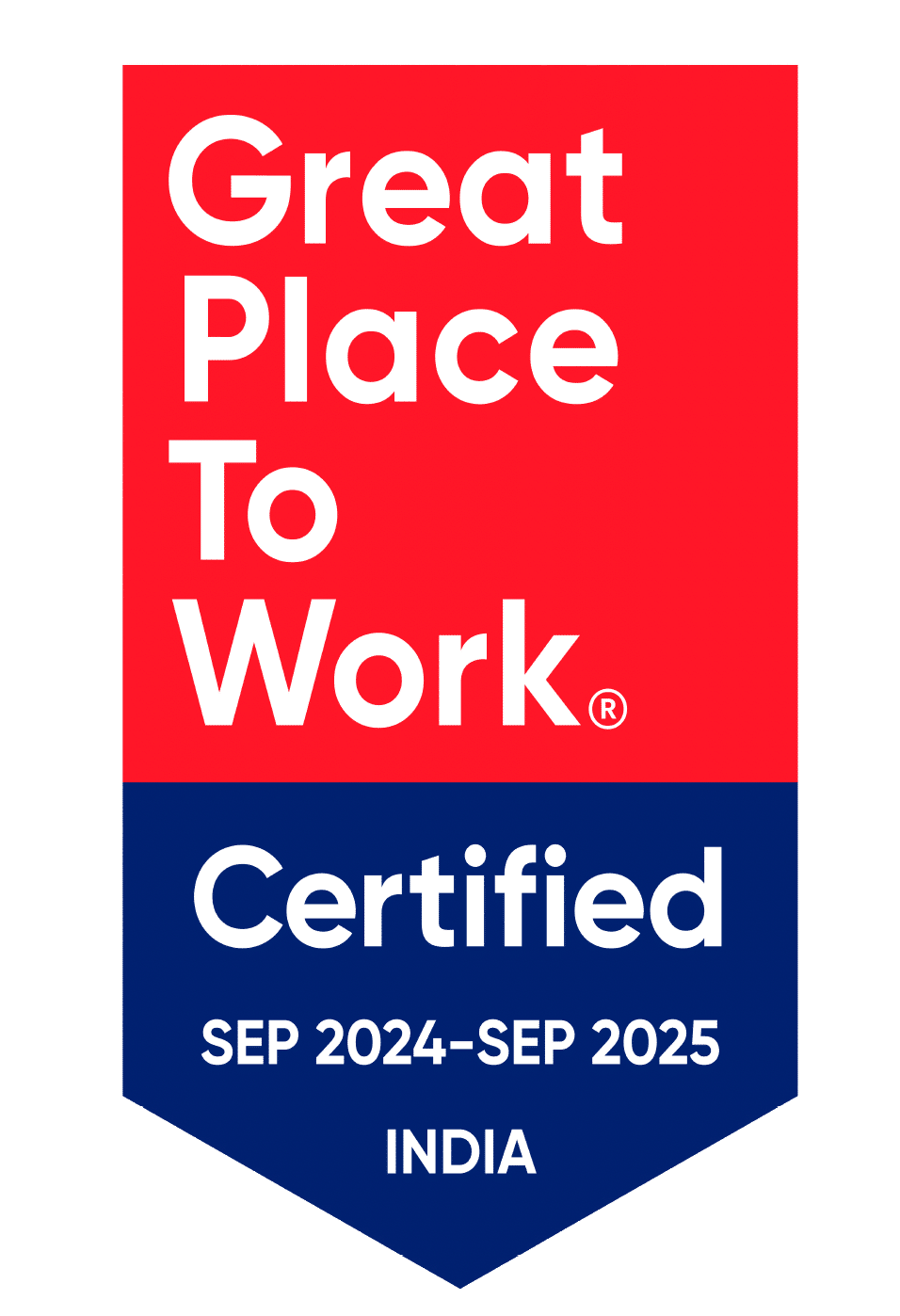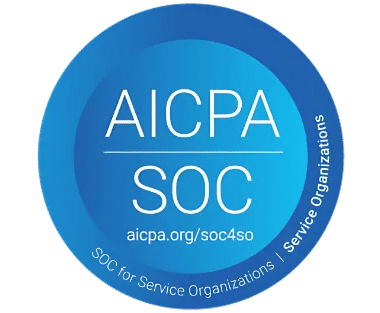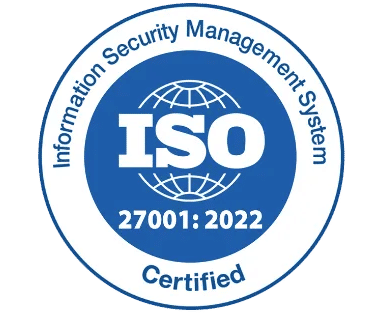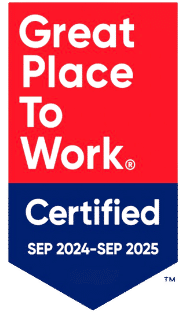Staff Performance Management System: Best Practices for 2025
_G3xWBjEctv.png)
The way companies manage staff performance has evolved significantly. With changing workplace dynamics, evolving employee expectations, and an increasingly data-driven business environment, outdated performance review models no longer meet the needs of today’s organizations. In 2025, staff performance management is about agility, alignment, and accountability.
This guide explores the most effective performance management strategies, backed by research and insights from real-world implementations. Whether you lead a distributed team or a growing enterprise, here’s what you need to know.
What is a Staff Performance Management System?
A staff performance management system is a structured framework or digital platform designed to track, evaluate, and improve employee performance. Unlike outdated annual appraisal methods which often feel disconnected from day-to-day work—modern systems prioritize continuous feedback, goal alignment, skill development, and employee engagement.
In 2025, performance management has matured into a strategic business process, not just an HR ritual. It’s no longer about assigning ratings at the end of the year it is about empowering employees throughout the year. These systems act as dynamic tools that support two-way communication, encourage real-time coaching, and keep individuals focused on both personal growth and organizational priorities.
A modern staff performance management system enables:\n
- Regular check-ins and feedback loops that build trust and accountability
- Transparent goal-setting using frameworks like OKRs or SMART goals
- Integration with learning and development tools, helping employees upskill continuously
- Performance analytics and dashboards that give leaders a clear view of team productivity, engagement, and potential risks
Importance of Staff Performance Management System
In an era where hybrid work is the norm and workforce expectations are rapidly evolving, traditional performance reviews just do not cut it anymore. Businesses today need more than yearly evaluations they need real-time performance management systems that are agile, data-driven, and people-centric.
A robust Staff Performance Management System is no longer a “nice-to-have” it is mission-critical. Here’s why:
1. Clear Goals and Role Expectations
In hybrid and remote work models, employees often feel disconnected or unsure about what is expected of them. A performance management system eliminates this ambiguity by:
- Aligning individual goals with departmental and organizational objectives
- Providing real-time visibility into expectations, priorities, and progress
- Encouraging ownership and self-driven accountability
Clarity drives confidence and confident employees deliver better outcomes.
2. Real-Time Feedback and Continuous Coaching
Gone are the days of the annual performance review. Top-performing organizations rely on continuous performance feedback loops to stay agile.
- Managers can deliver timely, constructive feedback, not six months too late
- Employees receive recognition, guidance, and coaching in the moment
- Data-backed evaluations reduce bias and emotional subjectivity
This ongoing feedback model builds trust and motivates employees to improve consistently.
3. A Culture of Growth and Development
Employees today want more than a paycheck they want career growth. A modern performance system helps you:
- Track individual development plans and upskilling goals
- Identify high-potential talent for internal promotions
- Drive engagement through personalized learning and improvement journeys
This nurtures a culture where employees feel valued and invested in boosting retention and morale.
4. Strategic Alignment with KPIs and Business Goals
Every team should know how their work impacts the bigger picture. Performance management tools ensure that:
- Objectives are aligned from the top down
- Everyone is moving in sync toward shared business outcomes
- Progress is tracked using clear, measurable KPIs
This strategic alignment minimizes resource waste and keeps everyone rowing in the same direction.
5. Data-Driven Decision Making
Manual evaluations can be biased, inconsistent, and prone to errors. A performance system introduces objectivity by:
- Collecting data from multiple sources (self-assessment, peer reviews, manager feedback)
- Generating performance trends, insights, and analytics
- Enabling HR and leadership to make informed talent decisions
You cannot improve what you do not measure data gives you the power to refine your people strategy.
Key Components of Staff Performance Management System
In today’s digitally connected and performance-driven workplace, a robust staff performance management system must go beyond simple evaluations. It needs to be holistic, flexible, data-driven, and deeply integrated with everyday workflows.
Here’s a breakdown of the core components that define an effective, future-ready performance management system:
1. Goal Setting and OKRs (Objectives and Key Results)
Setting clear goals is the foundation of any effective performance strategy.
- Employees understand what success looks like in their roles.
- Managers can track goal progress and provide support proactively.
- OKRs help align individual objectives with team and company-wide business goals.
Why it matters: It creates purpose, ownership, and direction no more working in silos or chasing vague targets.
2. Continuous Feedback Mechanism
Timely, ongoing feedback is more effective than annual reviews.
- Enables regular coaching and course correction.
- Builds a culture of transparency and open communication.
- Increases trust between employees and managers.
Why it matters: Employees improve faster when they are guided in real-time, not once a year.
3. 360-Degree Reviews
Performance is not just top-down—it’s a full-circle experience.
- Gather feedback from peers, subordinates, and managers.
- Get a holistic view of employee behavior, collaboration, and contribution.
- Reduce bias by incorporating multiple perspectives.
Why it matters: Empowers fair, well-rounded evaluations and strengthens team relationships.
4. Employee Learning & Development (L&D) Planning
Growth-focused employees are more likely to stay and contribute meaningfully.
- Link performance gaps with learning opportunities.
- Recommend personalized training based on individual needs.
- Track learning progress and tie it back to performance improvement.
Why it matters: A culture of continuous learning increases employee engagement and future-readiness.
5. Analytics & Dashboards for Insights
Raw data is powerful when it is visualized and actionable.
- Track key performance metrics across teams and departments.
- Spot trends, identify high performers, and detect areas of concern early.
- Use predictive analytics to make smarter talent decisions.
Why it matters: Decisions backed by data drive better business outcomes and reduce guesswork.
6. Recognition and Rewards
People thrive on appreciation especially when it is timely and visible.
- Automate shout-outs for milestones and goal achievements.
- Enable peer-to-peer recognition to build a positive culture.
- Tie rewards to measurable performance to ensure fairness.
Why it matters: Boosts morale, fuels motivation, and reinforces desired behaviours.
7. Mobile Accessibility and Integration
In a hybrid world, performance management must be accessible from anywhere.
- Access goals, feedback, and updates via mobile apps.
- Empower remote teams to stay aligned and engaged on the go.
- Integrate with productivity tools like Slack, Microsoft Teams, or Outlook.
Why it matters: Flexibility leads to adoption, and adoption leads to results.
8. Automation of Review Cycles
Manual processes slow you down and lead to inconsistencies.
- Automate performance review scheduling and reminders.
- Trigger self-evaluations, manager reviews, and calibration workflows.
- Ensure compliance and consistency across the organization.
Why it matters: Saves time, reduces human error, and speeds up feedback cycles.
9. Customization and Security
One size never fits all especially in performance management.
- Customize forms, review templates, rating scales, and workflows.
- Set role-based access controls to protect sensitive data.
- Align the system with your company’s processes and compliance needs.
Why it matters: Flexibility ensures adoption; security ensures trust.
10. Integration with Microsoft Tools (Teams, Outlook, SharePoint, etc.)
Performance management should not feel like extra work.
- Sync meetings and goal reviews with Outlook calendars.
- Share updates and feedback via Microsoft Teams.
- Store documents and feedback securely in SharePoint.
Why it matters: Deep integration increases ease of use and makes performance conversations a natural part of work.
How to Implement a Staff Performance Management System
Rolling out a Staff Performance Management System is not just about buying software it is about driving a mindset shift across your organization. Done right, it leads to better alignment, transparency, productivity, and retention. But to get those results, you need to be thoughtful and strategic in your implementation.
Here’s a step-by-step plan to get it right:
Step 1: Define Your Framework
Before anything else, get clarity on what performance means in your organization.
- Use SMART goals (Specific, Measurable, Achievable, Relevant, Time-bound) to avoid vague objectives.
- Define behavioural KPIs and soft-skill indicators, especially for roles that go beyond task completion (like leadership, client-facing teams, and support roles).
- Ensure alignment between individual aspirations and organizational objectives because when employees see “what’s in it for them,” they care more.
Involve cross-functional leadership in this phase so your performance metrics are practical and relevant across departments.
Step 2: Choose the Right Technology
A great system does not overwhelm it integrates naturally into your workflow.
- Choose a platform that aligns with your existing tech stack (like Microsoft 365, SharePoint, Teams, Outlook).
- Make sure it supports hybrid work environments and allows mobile access.
- Look for features like goal setting, continuous feedback, review cycles, analytics, and integration with collaboration tools.
Checklist:
- Is it easy to use?
- Can it scale with your team?
- Is it secure and compliant with your region’s data laws?
- Does it support customizations?
You do not want your team avoiding the system because it is clunky or irrelevant.
Step 3: Train Your Managers
Your system will only be as strong as the people using it especially your frontline managers.
- Offer training on how to have constructive performance conversations, give feedback with empathy, and recognize efforts meaningfully.
- Teach them how to use the new platform effectively (dashboards, review cycles, tracking tools).
- Equip them with conflict resolution techniques and bias-awareness training to improve fairness.
Why this matters: Managers are the bridge between strategy and execution. If they are not on board or trained well, the system will fall flat.
Step 4: Communicate the Change
Introducing a performance management system is a cultural shift not just a technical rollout. You need buy-in from every level.
- Start by explaining the “why”: What is broken in the current system? What are the benefits for employees?
- Share what is changing and what stays the same.
- Address concerns upfront, especially around privacy, frequency of evaluations, and fairness.
- Offer multiple formats of communication: emails, town halls, intranet updates, and one-on-one discussions.
Share early wins and testimonials during the rollout to build confidence and excitement.
Step 5: Monitor, Measure, and Iterate
Implementation is just the beginning continuous improvement is what makes the system sustainable.
- Send out quarterly surveys to collect employee feedback on usability, fairness, and effectiveness.
- Use built-in analytics to track performance trends, review completion rates, and feedback frequency.
- Identify bottlenecks (e.g., review delays, low feedback scores) and address them proactively.
- Refresh goals and KPIs regularly to match evolving business priorities.
Create a small Performance Council (HR + Managers) to meet quarterly and review insights for iteration.
Best Practices for Staff Performance Management System
Implementing a performance management system is only half the battle. To make it truly effective and sustainable, organizations need to follow proven best practices that align with modern workforce expectations and long-term business goals.
Here are the top practices that successful organizations follow to get the most out of their staff performance systems:
1. Align Individual Goals with Company Vision
Your people need to see the “why” behind their daily work.
- Start by cascading company-wide objectives down to departments and individual roles.
- Use OKRs (Objectives and Key Results) or SMART goals to tie everyday actions to strategic priorities.
- Ensure that each team member understands how their contribution impacts business outcomes.
Why it matters: Employees who see purpose in their tasks are more engaged, accountable, and motivated to perform at a higher level.
2. Enable Continuous Performance Feedback
Annual reviews are outdated and frankly, ineffective.
- Establish a culture of ongoing feedback, where managers and peers can share insights regularly.
- Use systems that allow in-the-moment recognition, coaching, and behavioral corrections.
- Balance praise with developmental feedback to maintain morale while encouraging growth.
Why it matters: Continuous feedback fuels improvement, strengthens relationships, and helps employees pivot quickly when goals shift.
3. Use People Analytics to Drive Decisions
Good data leads to great decisions.
- Leverage analytics dashboards to track goal progress, performance trends, and manager effectiveness.
- Identify patterns across departments: Where are goals being missed? Who are your high performers?
- Use this data for promotions, training plans, compensation discussions, and workforce planning.
Why it matters: Gut feelings and favouritism kill trust. Data-backed decisions are fair, credible, and strategic.
4. Prioritize Skill Development and Career Growth
Top talent stays where growth is visible and achievable.
- Connect performance evaluations to Learning & Development (L&D) initiatives.
- Set up individual development plans with clear goals, timelines, and skill outcomes.
- Offer mentorship, cross-functional exposure, and internal mobility as part of the performance roadmap.
Why it matters: Employees want more than appraisals they want a future. Investing in them shows you’re playing the long game.
5. Incorporate Well-Being into Evaluations
High performance should never come at the cost of health or morale.
- Encourage managers to discuss workload, stress levels, and work-life balance during review conversations.
- Track burnout signals through employee engagement metrics and feedback loops.
- Recognize not just results, but how those results were achieved—with sustainability in mind.
Why it matters: Employees perform best when they feel safe, supported, and balanced not when they’re stretched to breaking.
6. Calibrate Ratings Fairly with Peer Input
One person’s opinion should not define someone’s career trajectory.
- Use 360-degree reviews to include feedback from peers, subordinates, and collaborators.
- Host calibration meetings across departments to ensure rating fairness and avoid rating inflation or deflation.
- Standardize rating criteria to remove ambiguity and bias.
Why it matters: Fairness builds trust, and trust strengthens culture. Calibration keeps your evaluations consistent and credible.
7. Automate Performance Workflows
Manual processes waste time and cause friction.
- Automate performance review cycles, reminders, goal updates, and notifications.
- Use templates and workflows for self-assessments, manager evaluations, and peer reviews.
- Ensure compliance and completeness by tracking overdue tasks and pushing timely nudges.
Why it matters: Automation makes performance management scalable, reliable, and less of a burden for already busy teams.
Improves Workplace Communication and Collaboration
In any organization, strong communication is the backbone of productivity and yet, it is often one of the first casualties in fast-paced or hybrid work environments. A modern Staff Performance Management System helps bridge this gap by creating structured, consistent, and transparent communication loops.
Here’s how a performance system acts as a communication catalyst across the organization:
1. Builds Trust Through Consistent Conversations
When performance conversations happen only once a year, employees are left guessing about where they stand. A good system:
- Encourages ongoing 1:1 check-in between employees and managers.
- Promotes a culture of open, honest dialogue not just praise, but constructive input too.
- Reduces anxiety by creating a predictable rhythm for feedback and goal discussions.
Why this matters: Frequent communication builds psychological safety. Employees feel seen, heard, and valued and that builds trust faster than any HR memo ever could.
2. Boosts Team Morale with Recognition
Let’s be real everyone likes being appreciated. A performance management system that includes recognition features:
- Makes praise visible across teams, encouraging a culture of appreciation.
- Allows peer-to-peer recognition, not just top-down, giving employees a voice in celebrating one another.
- Connects recognition to specific goals or behaviors, making it meaningful not just a vague “good job.”
Why this matters: Recognized employees are more engaged, less likely to burn out, and more likely to go above and beyond. And when others see this culture, it becomes contagious.
3. Fosters Cross-Departmental Alignment Through OKRs
Miscommunication often happens when departments work in silos, unaware of each other’s priorities. With OKRs (Objectives and Key Results) built into the performance system:
- Everyone has visibility into what other teams are working toward.
- Teams can collaborate on shared goals, identify interdependencies, and avoid duplication of effort.
- It becomes easier to hold cross-functional projects accountable and on track.
Why this matters: Alignment reduces chaos. When everyone rows in the same direction, communication becomes proactive, not reactive.
4. Creates a Feedback-First Culture
By design, performance systems normalize feedback at every level:
- Managers give frequent micro-feedback, not just during formal reviews.
- Employees can request feedback to improve in real time.
- Leaders get upward feedback too, creating a two-way communication loop.
Why this matters: Feedback is no longer seen as criticism it becomes a growth tool. And that shifts the tone of communication across your entire organization.
Top 10 Staff Performance Management Systems in 2025
Engagedly
15Five
Tiny Pulse
Leapsome
Reflektive
PerformYard
Betterworks
Lattice
7Geese / Paycor
Features of Top Performance Management Software
The best performance management software is more than just a digital version of your old appraisal form. It is an intelligent, integrated system that empowers people, aligns performance with business goals, and creates a high-growth culture.
Here’s a deep dive into the must-have features of top-tier performance management platforms:
1. Continuous Feedback Mechanism
Annual reviews are out. Continuous feedback is in.
- Enables real-time coaching, praise, and guidance—right when it matters.
- Helps address performance issues early before they turn into full-blown problems.
- Builds stronger manager-employee relationships through frequent touchpoints.
Why it matters: When feedback flows freely and regularly, employees stay focused, motivated, and clear on how to improve.
2. 360-Degree Feedback
Performance is multi-dimensional your evaluation should be too.
- Collects input from peers, direct reports, managers, and even clients (if needed).
- Offers a well-rounded view of an employee’s strengths and development areas.
- Reduces bias by balancing perspectives, especially in collaborative environments.
Why it matters: People do not work in isolation. 360-degree feedback ensures fair, comprehensive evaluations.
3. Automated and Intuitive User Interface
Adoption starts with simplicity.
- Easy-to-navigate dashboards for managers, HR, and employees.
- Automated workflows for goal setting, reviews, and feedback requests.
- Notification alerts and reminders to keep everyone on track without micromanaging.
Why it matters: If it’s not user-friendly, no one’s going to use it. A clean, intuitive UI drives engagement and makes performance management a seamless part of work.
4. People Analytics for Real-Time Insights
Data is no longer optional it is the driver of smart decision-making.
- Provides visibility into performance trends, goal progress, review completion rates, and more.
- Highlights high-performers, flight risks, and skill gaps using real-time dashboards.
- Supports predictive insights to help HR and leadership act proactively.
Why it matters: You can’t improve what you don’t measure. People analytics helps businesses grow by investing where it counts.
5. Social Performance Management
Recognition should not be locked away in private inboxes.
- Allows peer-to-peer appreciation and social shout-outs across the organization.
- Integrates with internal collaboration tools like Microsoft Teams or Slack.
- Encourages a culture of celebration and appreciation, even in remote/hybrid setups.
Why it matters: Public praise builds a positive culture. When employees celebrate each other, teamwork and morale rise naturally.
6. Employee Reward and Recognition Tools
Recognition is powerful. Recognition with rewards? Even better.
- Link performance achievements with points, badges, or perks.
- Customize reward systems to fit your company culture—whether it’s gift cards, internal awards, or bonuses.
- Automate recognition triggers based on goal completions or milestone achievements.
Why it matters: Recognition reinforces positive behaviors. And when done right, it keeps top performers loyal and engaged.
7. SMART Goal Setting Capabilities
Generic goals lead to generic performance.
- Enables creation of Specific, Measurable, Achievable, Relevant, and Time-bound (SMART) goals.
- Allows employees and managers to collaboratively set and adjust goals.
- Links individual goals to team OKRs and organizational objectives for alignment.
Why it matters: Clear goals drive focused efforts. SMART goals give structure to ambition.
8. Integrated Learning Management System (LMS)
Performance and development go hand in hand.
- Connects performance gaps to learning opportunities in real-time.
- Offers personalized training paths based on evaluation outcomes.
- Tracks skill-building progress and integrates completion records with the performance dashboard.
Why it matters: Employees want to grow. An integrated LMS turns your performance system into a full-blown talent development engine.
9. Customization, Security, and Integration Options
No two organizations are alike your system should reflect your DNA.
- Customize rating scales, workflows, evaluation forms, and access levels.
- Ensure enterprise-grade security and compliance (SOC 2, GDPR, ISO 27001).
- Seamless integration with HRMS, Microsoft 365, Outlook, Teams, Slack, and payroll systems.
Why it matters: Customization ensures usability. Security builds trust. Integration saves time and eliminates data silos.
Case Example: Performance Management 365 in Action
A mid-sized IT company implemented Performance Management 365 and achieved:
40% better goal alignment
30% higher engagement in 3 months
15% reduction in high-performer attrition
Their HR Head noted, “Continuous feedback has reshaped our work culture. We focus less on admin work and more on enabling people.”
Conclusion
Staff performance management system in 2025 is no longer about annual scoresheets. It is about fostering transparency, empowering employees, and aligning performance with strategic outcomes. With the right system in place, organizations can boost productivity, retain talent, and drive sustainable growth.
Looking to future-proof your workforce? Contact us to explore how Performance Management 365 can redefine performance at your workplace.
Frequently Asked Questions
What makes a modern Staff Performance Management System different from traditional annual appraisals?
Traditional appraisals are typically one-time, backward-looking events that focus on rating past performance. In contrast, a modern Staff Performance Management System is continuous, goal-aligned, and employee-centric. It emphasizes real-time feedback, ongoing coaching, and transparent goal tracking making it far more effective and relevant in today’s hybrid and fast-changing work environments.
How can a Staff Performance Management System improve employee engagement and retention?
A well-implemented Staff Performance Management System supports clear expectations, timely recognition, and ongoing career development all of which are key drivers of employee engagement. With features like personalized learning paths, peer recognition, and growth-focused reviews, employees feel valued and motivated to stay. The result? Higher morale and reduced attrition especially among your top talent.
Why is goal alignment (via OKRs or SMART goals) so important in a Staff Performance Management System in 2025?
In 2025, businesses are more outcome-focused and data-driven than ever. A modern Staff Performance Management System uses goal alignment through OKRs (Objectives & Key Results) or SMART goals to ensure that every employee’s contributions directly support business priorities. This not only eliminates silos but also boosts accountability and accelerates results across remote and hybrid teams.
What role does analytics play in a Staff Performance Management System? Answer:
Analytics is at the core of a strategic Staff Performance Management System. It enables HR and leadership to:
- Track real-time performance trends
- Uncover coaching and development needs
- Identify high-potential employees or turnover risks
With actionable dashboards and predictive insights, companies can move from reactive reviews to proactive talent development and strategic workforce planning.
Can a Staff Performance Management System integrate with tools like Microsoft Teams or Outlook?
Absolutely. A top-tier Staff Performance Management System is designed for seamless integration with existing tools such as Microsoft 365, Teams, Outlook, and SharePoint. This allows performance conversations, feedback, and goal tracking to happen within the daily workflow enhancing adoption, engagement, and overall system effectiveness.










_svxLrd-8yH.png)

_2VYSFUTN5m.png)

_JiluXJRGNl.svg)

_2djTKNocf.png)





_Rapo0hRMBy.png)










